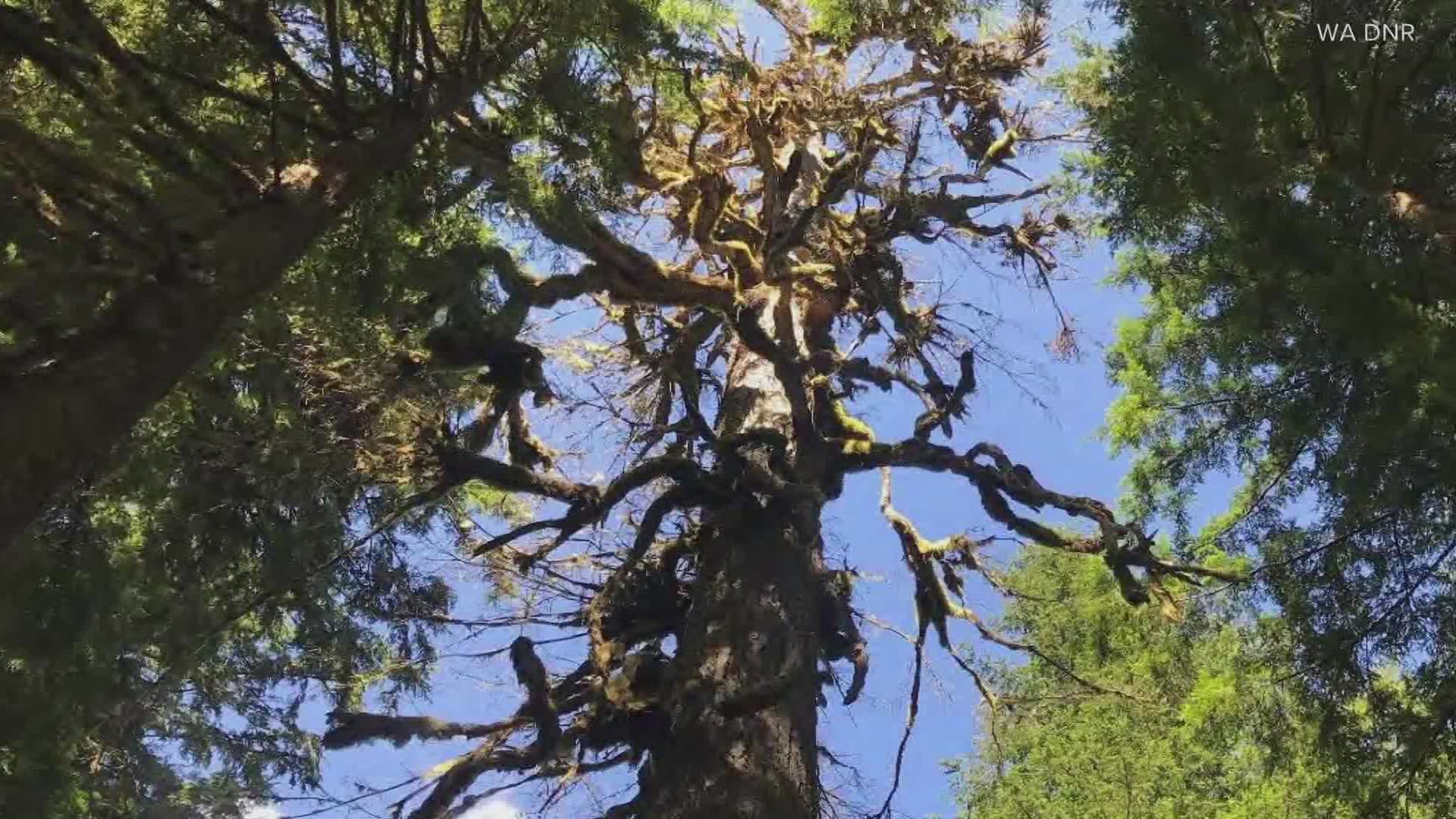NORTH BEND, Wash. — A stretch of old-growth forest habitat in the central Cascades along Hancock Creek, owned for a long time by the Cugini family, is now in the hands of the Washington State Department of Natural Resources (DNR), which plans to conserve the land and protect it as part of the Mount Si Natural Resources Conservation Area.
DNR said it plans to leave the land as untouched as possible, keeping it as a home for species such as the marbled murrelet and northern spotted owl. Non-profit land trust Forterra donated the land trust to DNR after acquiring 30 acres of timber rights to fully protect the property.
The acquisition and donation of the property is the latest move in Forterra’s Hancock Creek initiative. The multi-phase conservation program is part of a longstanding partnership with the Cugini family to protect the remaining forestlands they still own. The Hancock Creek property still contains 80 acres of unprotected timber rights yet to be conserved.
"My family has been involved in the forest products industry in western Washington for over 100 years, and my grandfather came to Renton in the 1920s and started working in the coal mines and then started delivering mine timbers to the mine. From that became a logger, and with being a logger came owning the sawmill on Lake Washington, and we ran that for many years," Robert Cugini said. "This is some of last remaining old-growth that exists in western Washington, especially that's located within 60 miles of saltwater, which is critical for an endangered species called the marbled murrelet."
Cugini explained that the marbled murrelet roosts in the large branch crooks of old-growth timber that's close to saltwater, which is where they feed. He said there isn't much left of old-growth timber near saltwater in Western Washington.
In a release, the DNR said its Rivers and Habitat Open Space Program funded the purchase of the timber rights on the 40 acres.
Forterra previously secured the land with funding from the Cooperative Endangered Species Conservation Fund, which is in Section 6 of the Endangered Species Act, through the United States Fish and Wildlife Service and in partnership with DNR. Forterra often facilitates between DNR, which has a network of priority parcels they'd like to continue to work to protect, and private landowners.
"Forterra can bridge that relationship in between the public entity and the private landowner and find a good conservation solution for everybody," said Michael Storace, Forterra project manager for conservation transactions.
Cugini says the property itself is somewhat remote but important to the ecosystem.
"[The property] is hard to access, but I would go every year at least once to look at it," Cugini said. "It's really quite majestic when you can. I've spent my life in the forest and around lumber and trees and all of this, but standing in an old-growth forest is an amazing experience."
DNR says the parcel will be put into its Mount Si Natural Resources Conservation Area, which is managed to protect the lands that are there and the resources that are on them in perpetuity.
"This transaction gives us an opportunity to ensure that this parcel of old-growth, which is rare, especially west of the Cascades, will go from a private landowner to be protected forever," DNR Communications Manager Kenny Ocker said. "The Mount Si Natural Resources Conservation area is in a block of conservation that DNR manages along the I-90 corridor that is large enough to provide meaningful conservation. This will add to that."
DNR says the larger an area that it can manage meaningfully for conservation the more the land will be able to continue providing habitat for threatened or endangered species.
Forterra says its mission is to look at "land for good" and combine both conservation and community. It's protected over 275,000 acres of land with multiple partners across the state for a total of 500 transactions, some of them with the Cugini family. This parcel will add to other land acquired and donated in the area.
"To have it close to Puget Sound so that marbled murrelets can go back and forth is really important, and those missing pieces are hard to find," Forterra Managing Director of Conservation Transactions Joe Sambataro said. "So, working hard to secure those sites. Hancock Creek has been an 8-year project, so this is one piece of a larger puzzle, a larger component of land we're working to protect together."
Cugini said that it was a meaningful milestone for his family.
"Putting these islands of habitat together I think are really important because it's quite fractured in its nature, and to the degree that we can preserve these islands, they really become a large portion of the remaining habitat that uses this biome," Cugini said. "It's a real special thing to be able to be a part of this, and it's meant a lot to me. I know my grandfather, it would mean a lot to him."

